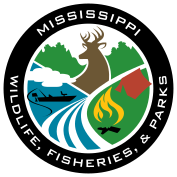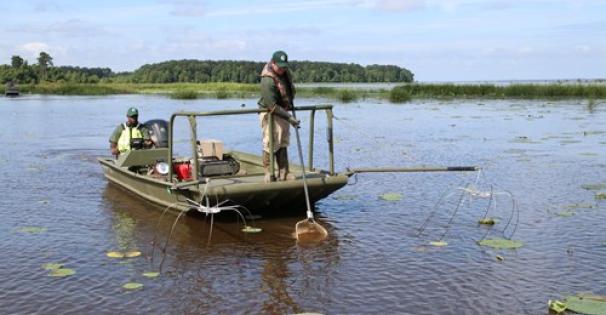
Alert
News on the dam assessment and repair can be found at UPDATE: Interim Repairs near completion at Arkabutla Dam
New crappie regulations went into effect on July 24, 2024 on the four Flood Control Reservoirs (Arkabutla, Sardis, Enid, and Grenada) and their spillways.
The daily creel limit for crappie is 10 fish per angler, and the daily aggregate limit is 25 fish for boats with three or more anglers. Crappie must be over 12 inches, and the pole limit remains at 4 per angler. In addition, fish may only be cleaned at designated fish cleaning stations if available, not on the water or in the boat ramp parking lots. In the spillways, the daily limit is 10 fish per angler. There are no boat or size limits in the spillways. Pole limits in the rip-rapped portions of the spillways remain 1 per angler.
All ramps are blocked off except for the gravel one into the north river channel at Hwy 51 landing parking lot. How far you can go there is limited by river flow and/or lake level. Creek and river bank fishing are other options.
For COE regulations, see: US Army Corps of Engineers
Weekly fishing reports will resume the week of February 15, 2026.
Winter fishing can be good because fish school tightly and are concentrated by low water. Fish bite better after a few warm sunny days. Best bet is to fish midday on sunny areas. Check water levels; except for catfish, fishing is usually better on a slow fall than a fast rise. Even in cold weather, catfish will feed in rainfall runoff.
Fishing Report - Updated 12/2/2025
| Fish | Fish from the bank or in creek and river pools for bass, crappie, white bass, or catfish. Use baits and lures appropriate for your target fish (ex. soft plastics for bass, jigs for crappie, natural baits for catfish). Rain runoff usually triggers a catfish bite. |
All fishing regulations remain in effect. It is a good time to take pictures or waypoints of bottom cover or habitat for when the lake refills. Be very careful around steep banks or soft bottomed areas. Some fish have survived in the main lake, sloughs, and creek and river channels.
Check water level trends; except for catfish, fishing is usually better on a slow fall than a fast rise. Be aware water rises and drawdowns will be very rapid.
The extended drawdown is allowing vegetation to colonize exposed areas, providing habitat, cover, and food for fish, aquatic invertebrates, waterfowl, and other wildlife when re-flooded. Flooded vegetation also settles sediment out of the water. A September 2025 habitat survey found lots of 10 to 30 ft tall willows colonizing around the new waterline, lake bottom, and creek banks (Dub Patton ramp, above). Other wetland trees (cottonwood, cypress, etc.) were scarcer and smaller. Smartweed (seeds are good duck forage) was also abundant.
